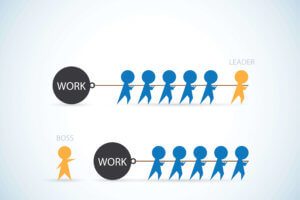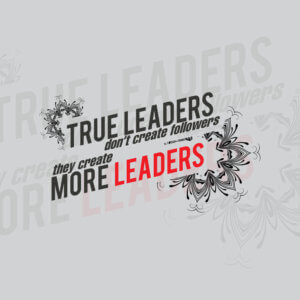
Which kind of leader are you? If you’re a sole trader, it’s probably fair to say leadership and management responsibility sits entirely with you. If you’ve got a small team, the responsibility still sits with you, but you now need every single one of your people aligned and performing at their peak. And if you run a much bigger operation, creating consistency and building strength at every level is critical to succession planning.
So we have three different business models with different numbers of people, roles, seniority bringing with it different complexities and challenges.
Does each model require a different style of leadership?
Maybe yes…or maybe not.
If you want to accelerate and fast track the success of your business and build sustained high performance, developing your leadership culture is among your biggest priorities. I call it out as one of the ten business enablers for delivering your business growth agenda.
As Jack Welch so eloquently put it ‘before you are a leader, success is all about growing yourself. When you become a leader, success is all about growing others.’
One of the single most competitive advantages for businesses today is their ability to grow, nurture, and develop leadership and management capability faster than the competition . . . future business success depends on it.
Which kind of leader are you?

There are usually two distinct groups of people: leaders and followers. And the fundamental question you need to ask is this…in your business are you developing leaders or are you developing followers? How you answer will certainly give some insight into which kind of leader you are.
A leader who adopts the ‘leader-follower’ model
The leader-follower model has been with us for generations and is perpetuated through businesses to this very day. A hierarchical, command and control structure with decision-making from the top is what we know, and for good reason.
Throughout history, a number of great achievements have been accomplished through the leader-follower model, and it has enabled many people to achieve success in their chosen field. It is exactly because the leader-follower way of doing business has been so successful that it is so hard to give up.
In our modern world, the most important work we do is cognitive, and the leader-follower structure just isn’t a very good model for intellectual work. Differing motivations and aspirations, particularly from one generation to the next, only exacerbate the problem and demand an alternative approach.
People who are treated like followers have the expectations of followers and act as followers.
That means they have limited decision-making authority and little incentive to give the utmost of their intellect, energy, and passion. Those who take orders usually run at half speed, under-utilising their imagination and initiative.

In a leader-follower model, all decision-making defaults to the leader and therefore the business gets squashed, constrained, and contracted, reducing the headspace to grow.
It can be particularly challenging when the leader is exceptionally charismatic, or worse when they’re an out-and-out autocrat because the ability of people to shine is increasingly limited over time.
In a leader-follower structure, the performance of the business is closely linked to the ability of the key leader at the top, so inevitably there is a natural tendency to develop personality-driven leadership; an approach that might deliver short-term results, but will never allow you to build a high performing, sustainable, legacy business.
A leader who adopts the leader-leader model
A leader-leader model is fundamentally different from the leader-follower model. At its core is the belief that we can all be leaders, and in fact, it’s best when we all are.
The leader-leader model not only achieves great improvements in effectiveness and morale but also makes the business stronger. Critically, these improvements are enduring, decoupled from the leader’s personality and presence.
Leader-leader models are significantly more resilient.
They do not act as if the designated leader is always right. Further, leader-leader structures naturally spawn additional leaders throughout the organisation. It’s a force that can’t be stopped.

Implementing a leader-leader structure focus and commitment, and requires consistency of thought and action.
It operates from a solid core of personal ownership, each individual taking responsibility and accountability for their actions and results; where everyone thinks, feels, and acts like it’s their business, regardless of their job title, office, or place on the hierarchy.
A leader-leader model creates a high-performance culture based on inspirational and developmental feedback, coaching and continuous capability.
What to learn more about the ‘leader-leader’ model?
Check out the following resources…
On-demand webinar: ‘How to build a self-sustaining leader-leader culture’
Video: A-Z series of business growth: L=Leadership
Blog: Are you building a leader-leader or leader-follower culture in your business?
IS LEADERSHIP YOUR THING? CHECK OUT THESE RESOURCES
Blog:
How to develop your leadership capability
Why great leadership is an inside job first


